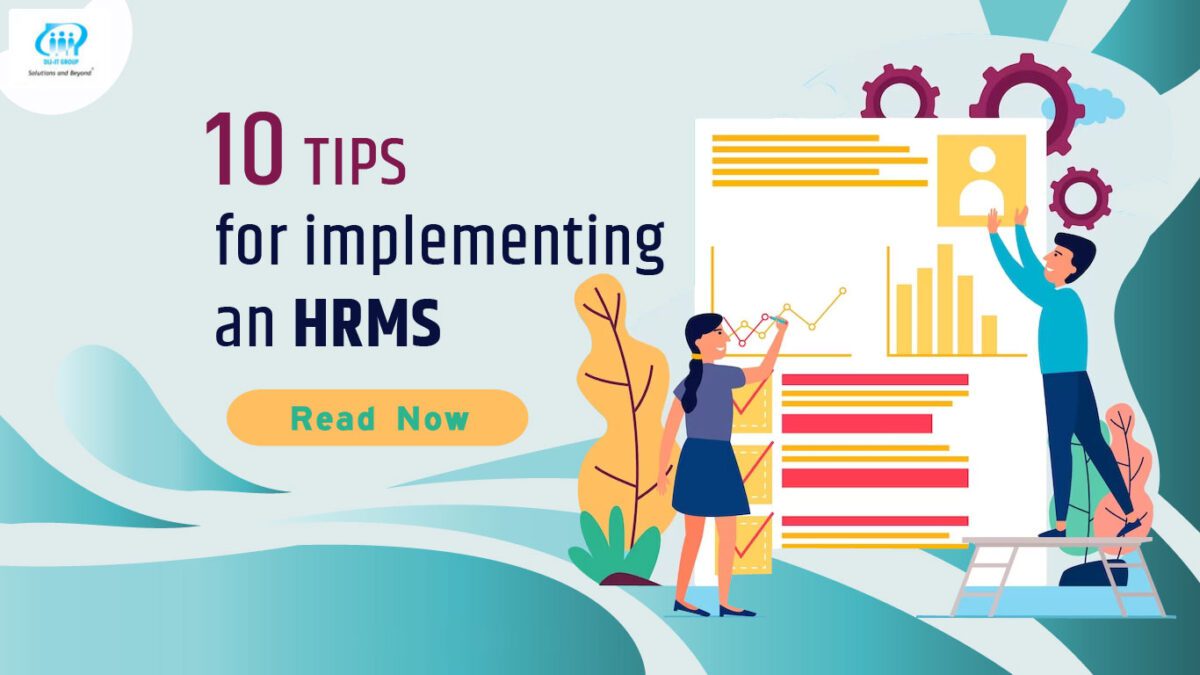Implementing a Human Resource Management System (HRMS) is a significant undertaking that can have a significant impact on your organization’s success. Here are ten tips to consider when implementing an HRMS:
Plan for Change
Plan for the cultural and operational changes that will be required as part of the HRMS implementation. Ensure that you have a change management plan that involves key stakeholders across the organization.
Select the Right HRMS
Before selecting an HRMS, conduct a thorough analysis of your organization’s requirements, goals, and objectives. Then, evaluate the HRMS solutions in the market that fit your requirements and objectives.
Assign a Project Manager
Appoint an experienced project manager who can manage the HRMS implementation project, work with key stakeholders, and ensure that the project stays on schedule and within budget.
Define Clear Goals and Objectives
Define clear goals and objectives for the HRMS implementation project that align with your organization’s overall strategic objectives. This will help you measure the success of the HRMS implementation.
Customize Your HRMS
Customize the HRMS to meet your organization’s specific needs. This may include configuring workflows, adding custom fields, and creating custom reports.
Ensure Data Quality
Ensure that your data is clean, complete, and accurate before importing it into the HRMS. This will help avoid data quality issues and ensure that the HRMS provides accurate insights and reports.
Train Users
Provide comprehensive training to HRMS users across the organization to ensure that they can use the system effectively. This will help ensure that the HRMS is adopted and utilized across the organization.
Test, Test, and Test
Test the HRMS thoroughly before going live to ensure that it meets your organization’s requirements and objectives. This will help you identify and resolve any issues before they become a problem.
Monitor and Measure Performance
Monitor the HRMS’s performance regularly and measure its impact on the organization. This will help you identify areas for improvement and make data-driven decisions.
Continuous Improvement
Continuously improve the HRMS by incorporating feedback from users and making enhancements based on your organization’s changing needs. This will help ensure that the HRMS remains relevant and effective over time.
Benefits of HRMS implementation
Improved Efficiency:
One of the most significant benefits of HRMS implementation is improved efficiency. By automating HR processes, HR teams can spend less time on administrative tasks and more time on strategic initiatives. HRMS can streamline several time-consuming HR tasks, such as employee onboarding, payroll processing, performance appraisals, and compliance management, among others. This can help reduce errors, save time, and increase productivity.
Enhanced Data Security:
Data security is a critical concern for all organizations, especially those that handle sensitive employee information. HRMS solutions provide robust security features to ensure that employee data remains secure and protected from unauthorized access. HRMS can restrict access to sensitive data to authorized personnel only, encrypt sensitive data, and ensure that data is backed up regularly. This can help organizations comply with data protection regulations and prevent data breaches.
Improved Employee Satisfaction:
HRMS implementation can improve employee satisfaction in several ways. By automating HR processes, HR teams can reduce errors, ensure timely communication, and provide employees with more transparency into their HR-related activities. Employees can access their HR records, update their personal information, and view their payroll information and benefits using self-service portals. This can help employees feel more in control of their HR-related activities, leading to improved satisfaction.
Better Decision-Making:
HRMS solutions provide real-time analytics and reporting capabilities, enabling HR teams to make data-driven decisions. HRMS can generate reports on employee turnover, absenteeism, performance, and other critical HR metrics, allowing HR teams to identify trends and make informed decisions. This can help organizations optimize their HR processes, identify areas for improvement, and reduce HR-related costs.
Compliance Management:
Compliance management is a critical aspect of HR management, and non-compliance can result in severe penalties and legal consequences. HRMS solutions can automate compliance management by providing alerts, reminders, and notifications to ensure that organizations comply with all relevant regulations and laws. HRMS can also generate compliance-related reports, making it easier for organizations to provide evidence of compliance during audits.
Conclusion:
By following these ten tips, you can successfully implement an HRMS that improves your organization’s HR processes, data accuracy, and overall performance. HRMS implementation can provide several benefits to organizations, including improved efficiency, enhanced data security, improved employee satisfaction, better decision-making, and compliance management. These benefits can help organizations streamline their HR processes, reduce costs, and improve overall productivity. However, it’s essential to choose the right HRMS solution that meets your organization’s specific needs and requirements.
